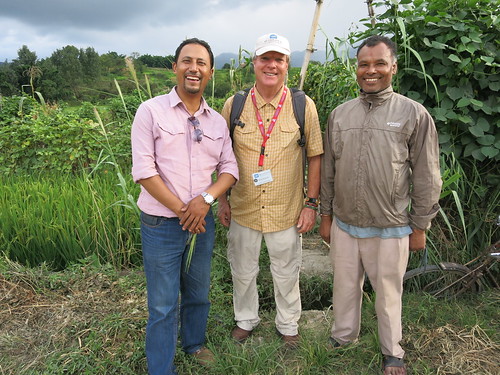
Kirk Astroth, director of the Arizona 4-H Youth Development Program, center, traveled to Nepal in 2014 to teach a train-the-trainer program that led to Nepal’s first 4-H national organization. (Photo courtesy of Kirk Astroth)
The United Nations’ celebrates International Youth every August and this year’s theme is Youth Leading Sustainability. The international recognition focuses on the leading role of young people in pursuing poverty eradication and achieving sustainable development through sustainable production and consumption. There are roughly 1.8 billion young people between the ages of 10 and 24, the largest generation of youth in human history. They face never-before-seen shifts in populations, economies, technology, health and the environment. USDA and the National Institute of Food and Agriculture help today’s youth navigate these shifts and develop into healthy adults.
Recognizing the voice of youth is important and USDA’s National Institute of Food and Agriculture (NIFA) plays a key role in providing positive youth development through the internationally recognized 4-H program, which empowers youth to reach their full potential, working and learning in partnership with caring adults.
4-H is managed at the national level by 4-H National Headquarters and implemented through Cooperative Extension System partners at land-grant universities. 4-H engages youth within their communities, schools, organizations, peer groups and families to enhance their strengths through framed learning experiences on topics such as citizenship, science and healthy living. 4-H programs create sustainable change in their communities and help youth find their voice and build their leadership strengths.
NIFA has administered 4-H for more than a century and that deep experience has helped other nations create similar youth development programs. Examples include the Finnish 4-H program, which is more than 90 years old and the 4-H program in Korea that was founded more than 75 years ago. In another example, Kansas State University Extension worked with the nonprofit Partners of the Americas to help make Paraguay’s 4-H program more accessible and relevant for youth throughout the country.
NIFA’s Division of Youth and 4-H makes these activities possible by connecting land-grant extension 4-H youth development experts with federal agencies, organizations and representatives of other countries to exchange ideas, replicate model programs, build global awareness and implement international positive youth development programs.
Youth in Senegal are benefitting from one of the latest partnering efforts. Since 2015, youth in that West African nation have grown vegetable seedlings and organized money-raising traditional Senegalese wrestling events in a program—Senegal 4-H—modeled after Virginia Cooperative Extension’s 4-H program.
In all, the 4-H model is sustainably leading youth in about 80 other countries. In 2015, nearly 6.5 million adult volunteers and youth sported the green four-leaf clover as they prepared for college, work, career and life. As iconic as it is, 4-H is not just an American phenomenon, its principles have become deeply entrenched abroad, as well.
NIFA invests in and advances agricultural research, education and extension and seeks to make transformative discoveries that solve societal challenges.
No comments:
Post a Comment
Note: Only a member of this blog may post a comment.